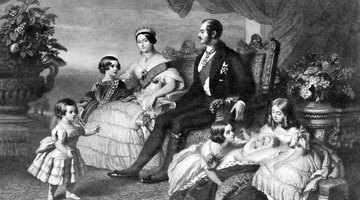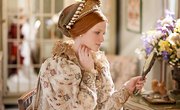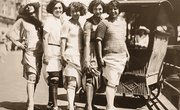The Victorian era began with coronation of Queen Victoria in 1837 and lasted until her death in 1901. The Victorian period began as the Georgian era and the Industrial Revolution came to end. England saw many wars during the Georgian era, but the Victorian era offered important political, economical and cultural transformations to England. The period that saw the expanding of both the British Empire and the middle class responded to rapid cultural changes with rigid societal expectations.
Expansion of British Influence
The Victorian era is named in honor of Queen Victoria, who took the throne in 1837 and oversaw nearly 63 years of expansion of the British Empire. The United Kingdom physically extended its borders, at one point claiming nearly a quarter of the world through colonization and becoming a top political power. It also set the tone for fashion, social order and general culture throughout Europe and the United States.
Emphasis on Modesty and Restraint
Queen Victoria’s predecessor, King William IV, had lived a life of public excess. He openly fathered children with women he never married and became known as the rogue king. Victoria modeled her lifestyle -- and attempted to give the British people an example -- from the other extreme. Clothing and behavior, in both public and private, were modest. Discussing physical love in the public sphere was frowned upon, and any discussion of sex was limited. Social historians like Sally Mitchell note that most middle- and upper-class newlyweds approached marriage in a state of almost absolute ignorance about sex.
Division of Classes
While the industrial revolution allowed some economic upward mobility, the division of “old money” and “new money” became pronounced. Mitchell writes that one’s net worth meant little compared to one’s land holdings and family history. This was true in all classes: An office clerk’s profession was deemed more respectable and middle class than that of a skilled laborer who might actually be paid more. Despite the deepening division between classes, the middle class grew at exponential rate. As demand for products grew, the middle class grew to accommodate the need for more laborers. In addition to laborers, the number of servants increased as well. By 1900, nearly one-third of women aged 20 or younger were in service.
Importance of Proper Etiquette
Because most Victorians prized propriety, one’s reputation was of huge importance. Ensuring an individual stayed in society’s good graces dictated an extremely detailed code of everyday manners and etiquette. This is best exemplified by the popular Victorian-era tome "Our Deportment: Or, the Manners, Conduct and Dress of the Most Refined Society," a more than 400-page instructional book written by John H. Young and published in 1882. Young authored the book largely on the premise that, as he wrote, manners represented the core ideals of Christianity and would promote goodwill and peace within humanity at large.
Scrutiny of Courtship and Romance
By necessity, young working-class Victorians were held to less strict rules for socializing, but their middle- and upper-class counterparts experienced romance under the watchful eyes of family and chaperones, says Jennifer Phegley in her book, “Courtship and Marriage in Victorian England.” Young women in this sphere were rarely left alone with boys and men to whom they weren’t related. And, at the first feelings of romantic interest, Victorian men had to follow the deeply ingrained belief that marriage must soon follow, so if they were unready or financially unable to pursue a legal union, it was considered in poor taste to pursue any kind of courtship. “Dating” usually consisted of supervised visits at a young woman’s home or walks in large groups.
Related Articles
References
Writer Bio
Sabine McKellen began her career teaching English as a Second Language to adults from around the world. She has spent the past seven years in journalism, covering social issues, specifically in rural communities. Her work has appeared in community newspapers throughout southern California, and in various trade and educational magazines.











